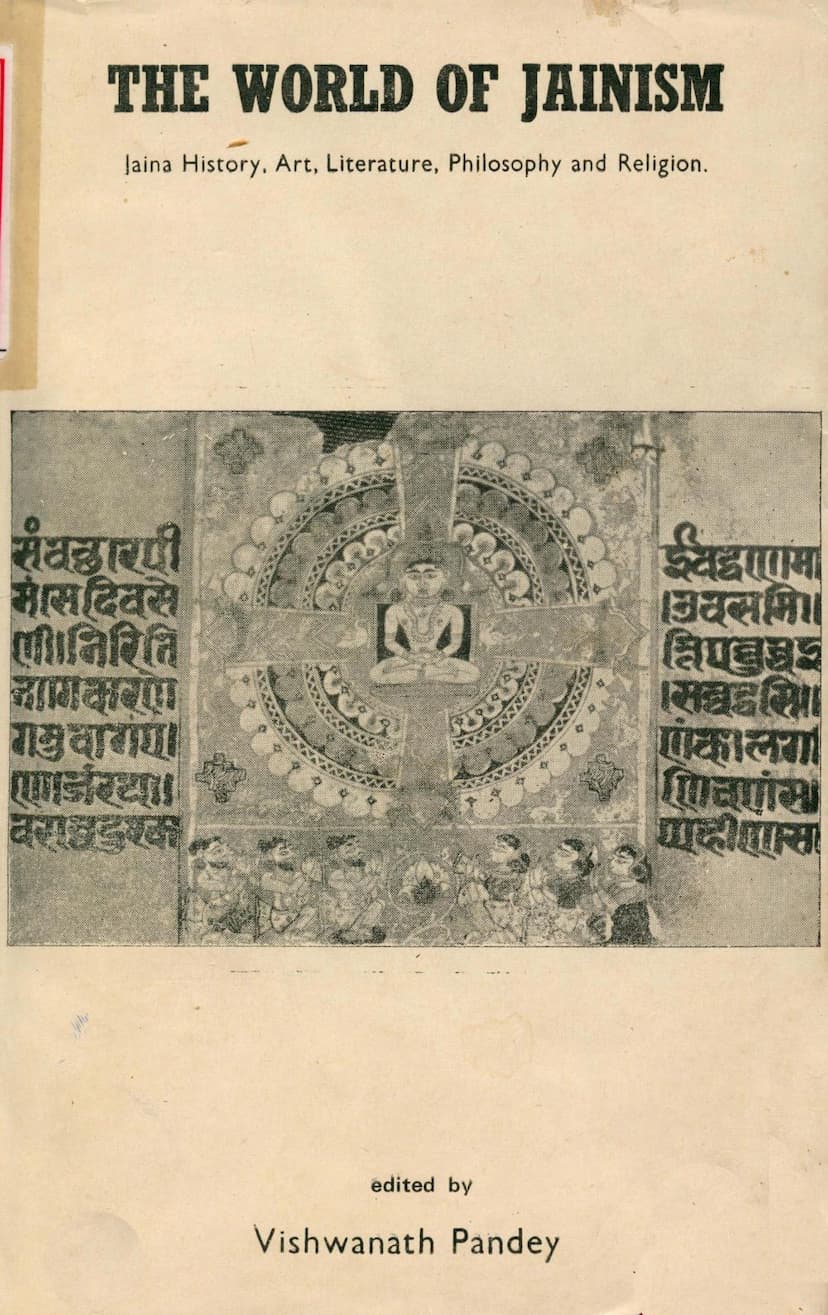World Of Jainism
Added to library: September 2, 2025

Summary
Here's a comprehensive summary of "The World of Jainism" edited by Vishwanath Pandey, based on the provided text:
Book Title: The World of Jainism Author(s): Vishwanath Pandey (Editor), with contributions from eminent scholars. Publisher: Vishwanath Pandey Catalog Link: https://jainqq.org/explore/023359/1
Overall Purpose and Scope: "The World of Jainism" is a collection of scholarly articles designed to provide a comprehensive and complete picture of Jainism. It aims to highlight all major aspects of the religion, including its history, art, literature, philosophy, and religion. The book offers an objective yet sympathetic exposition, underscoring Jainism's significance within Indian culture and the broader cultural history of the world.
Key Themes and Contributions:
-
Comprehensive Coverage: The book covers a wide range of topics related to Jainism, aiming to be an informative resource for both general readers and scholars. It includes articles on the evolution of Jaina thought, Jaina philosophy and religion, Jaina narrative literature, the position of women in Jaina literature, Jaina art and architecture, and bibliographical aids for studying Jainism.
-
Jainism's Place in Indian Culture: The foreword by Shriyans Prasad Jain emphasizes that Indian culture is deeply indebted to Jaina thought, particularly for principles like non-violence (Ahimsa), Anekanta (many-sidedness), and limited possession. The book demonstrates how Jainism has immensely contributed to the development of Indian civilization and culture across various domains.
-
Core Jaina Tenets:
- Ahimsa (Non-violence): Mahavira's teachings on Ahimsa are presented as a central and profound aspect of Jainism, extended to encompass non-injury to all living beings, emphasizing universal love and acceptance. The book explores its strict observance by monks and its interpretation for householders.
- Anekanta-vada (Many-sidedness): This doctrine, considered Mahavira's greatest contribution, teaches that truth is multifaceted and that different philosophical and religious schools hold partial truths. It encourages respect for diverse viewpoints and open-mindedness, fostering a spirit of "familyhood of all religions."
- Renunciation (Nivritti): Jainism champions complete renunciation as a path to liberation, stemming from the belief that attachment leads to injury (himsa) and ultimately bondage.
- Karma and Liberation: The concept of karma, where actions (bodily, speech, and mental) create karmic particles that cloud the soul, is fundamental. Liberation (Moksha/Nirvana) is achieved by shedding these karmas through right faith, right knowledge, and right conduct, ultimately relying on self-effort without divine grace.
-
Historical Context:
- Origins and Tirthankaras: The book traces Jainism's history from its first Tirthankara, Rishabhadeva, to Mahavira, the 24th and last Tirthankara. It acknowledges the long tradition and the potential pre-Aryan roots of Sramana culture, which influenced early Indian thought.
- Mahavira's Life and Teachings: The text details Mahavira's life, his renunciation, his quest for enlightenment through asceticism, and his attainment of Kevala Jnana (omniscience). It highlights his teachings on the five great vows and his emphasis on inner transformation over Vedic ritualism.
- Relationship with Buddhism: Jainism and Buddhism are presented as ethical systems that emerged as revolts against Vedic ritualism, emphasizing moral purity and spiritual development. They are noted as contemporaries with overlapping regions of activity.
-
Jaina Art and Architecture: The book showcases Jainism's significant contribution to Indian art and architecture. It mentions early finds like the Lohanipur torso, Kankali Tila sculptures, and Udayagiri and Khandagiri caves. The exquisite temples of Mount Abu, the colossal statue of Gomateshwara at Sravana Belgola, and the intricate sculptures and paintings found across India are highlighted as testaments to Jainism's artistic heritage. The fusion of art styles in India is also discussed, making it sometimes difficult to isolate purely "Jaina art."
-
Jaina Literature and Narrative Tradition: The narrative literature of Jainism, written in Prakrit and later Sanskrit and regional languages, is described as rich and informative, reflecting contemporary life, customs, and beliefs. It served as a vehicle for spiritual teachings, often incorporating supernatural elements. The position of women as depicted in this literature is also explored.
-
Influence and Spread: Jainism's impact on Southern India, particularly in Tamilakam and Karnataka, is detailed, citing its prevalence in early Tamil literature and the adherence of prominent writers to the faith. Its geographical spread and its stronghold in Western India are also discussed.
-
Jainism in Modern Life: C.C. Shah's article examines Jainism's ethical core and its relevance to modern life, discussing how its principles like Ahimsa, Aparigraha, and Anekanta are needed today. The article also touches upon potential challenges and the need for re-examination of practices to suit contemporary needs, acknowledging the potential contradictions between extreme asceticism and active social responsibility.
-
Bibliographical Aids: Urmi Bhagwati's contribution provides an extensive list of bibliographies, indexes, periodicals, and catalogues that serve as valuable resources for researchers and enthusiasts studying Jainism.
Critical Perspectives and Nuances: The foreword by Shriyans Prasad Jain points out potential "misconceptions" in Dr. Pandey's analysis regarding the overemphasis on asceticism and Ahimsa, and the interpretation of Sallekhana. He clarifies the nuanced practice of Ahimsa for householders and differentiates Jaina asceticism from Brahmanic models. The book itself acknowledges that while religious practices are explored, criticisms are offered to invite fresh thinking and promote interest in Jainism.
In essence, "The World of Jainism" serves as a vital compilation that illuminates the multifaceted nature of Jainism, from its foundational principles and historical trajectory to its artistic expressions and philosophical depth, emphasizing its enduring relevance and profound impact on Indian culture.